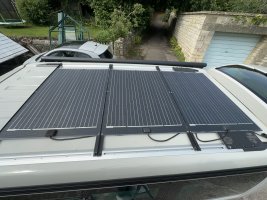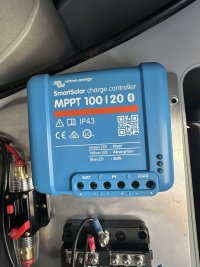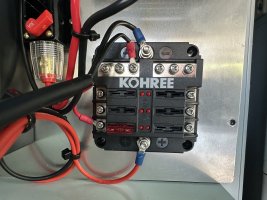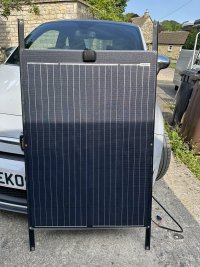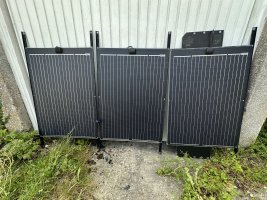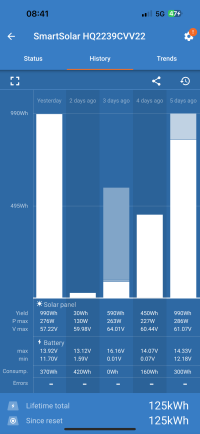But the tilt can't ever be perfect. It can only max at 22.5 degrees. Versus an optimal of 40 degrees.
The setup was designed to be overclocked for this very reason.
That was what I was trying to establish. Real world vs theoretical.
This debate is great. All I can establish is my real world experience.
So with lower rated panels, the P Max in my experience would be lower.
This is from Grok - a source you respect.
Key Factors to Consider
- Orientation and Tilt Impact:
- Ideal Conditions: In the UK, solar panels perform best facing south with a tilt of 30-40° to capture maximum sunlight, especially during summer months like July. Misalignment (e.g., east/west facing or flat roofs) can reduce output by 10-25%, per the Energy Saving Trust.
- Your Situation: If you can’t angle perfectly, output loss depends on deviation. East/west orientations might yield 80-90% of optimal, while north-facing could drop to 50-70%. Oversizing could offset this by generating excess power during peak sun hours.
- Overspecification Benefits:
- Increased Yield: A larger system (e.g., 6 kW instead of 4 kW for a typical home) can produce more kilowatt-hours (kWh) annually, compensating for angle inefficiencies. For example, a 4 kW system might generate 3,400 kWh/year optimally; oversizing to 6 kW could push this to 5,100 kWh, even with reduced efficiency.
- Future-Proofing: Higher capacity accommodates rising energy needs (e.g., electric vehicles, heat pumps) or feed-in tariff (FIT) earnings if available.
- Summer Surplus: In July, with ~5-6 peak sun hours daily in the UK, excess generation can be sold back to the grid or stored (if you have a battery).
Awesome! Here’s specific to your case:
The Victron SmartSolar MPPT 100/20 charge controller is rated for a nominal PV power of 290W in a 12V battery system. Using 360W of solar input represents overpaneling by approximately 24%, which Victron generally allows and even recommends up to around 30% for improved performance in low-light conditions (e.g., cloudy days or early/late hours), as the controller will simply limit its output to the maximum charge current of 20A without drawing excess power.
However, there are a few potential risks and considerations to be aware of:
• Power Clipping and Inefficiency: The controller will cap output at around 290W (based on battery voltage during charging, typically 14-14.4V), meaning any excess from the 360W array won’t be utilized. This isn’t a risk to the hardware but results in underused panel capacity during peak sunlight.
• Overheating: Constant operation near or at the maximum output due to overpaneling could cause the controller to run hotter, potentially leading to thermal derating (reduced output to prevent damage) if ambient temperatures exceed 40°C. Victron controllers include built-in temperature protection, so this rarely causes failure, but ensure good ventilation and mounting in a shaded area.
• Reverse Polarity Damage if Isc Exceeds Limits: The maximum recommended PV short circuit current (Isc) is 20A. If your 360W array’s Isc exceeds this (e.g., multiple panels in parallel producing higher combined current), there’s no issue during normal operation—the controller limits input. However, in the event of accidental reverse polarity connection during installation, higher Isc could damage internal components. Always double-check wiring and consider fuses on the PV side.
• Voltage Risks: Ensure the array’s open circuit voltage (Voc) stays below 100V, even in cold temperatures (add a 10-25% safety margin for voltage rise in freezing conditions). Exceeding Voc can trigger an overvoltage error and halt charging, or in extreme cases, damage the unit.
Overall, overpaneling at this level is common and low-risk if the system is properly configured and installed, with no damage expected under normal use. Victron’s design self-limits power to protect itself. If your array’s specs (Voc and Isc) push close to limits, upgrading to a 100/30 (rated for 440W at 12V) would eliminate any concerns. 21 16 18 4 9
Sent from my iPhone using Tapatalk



